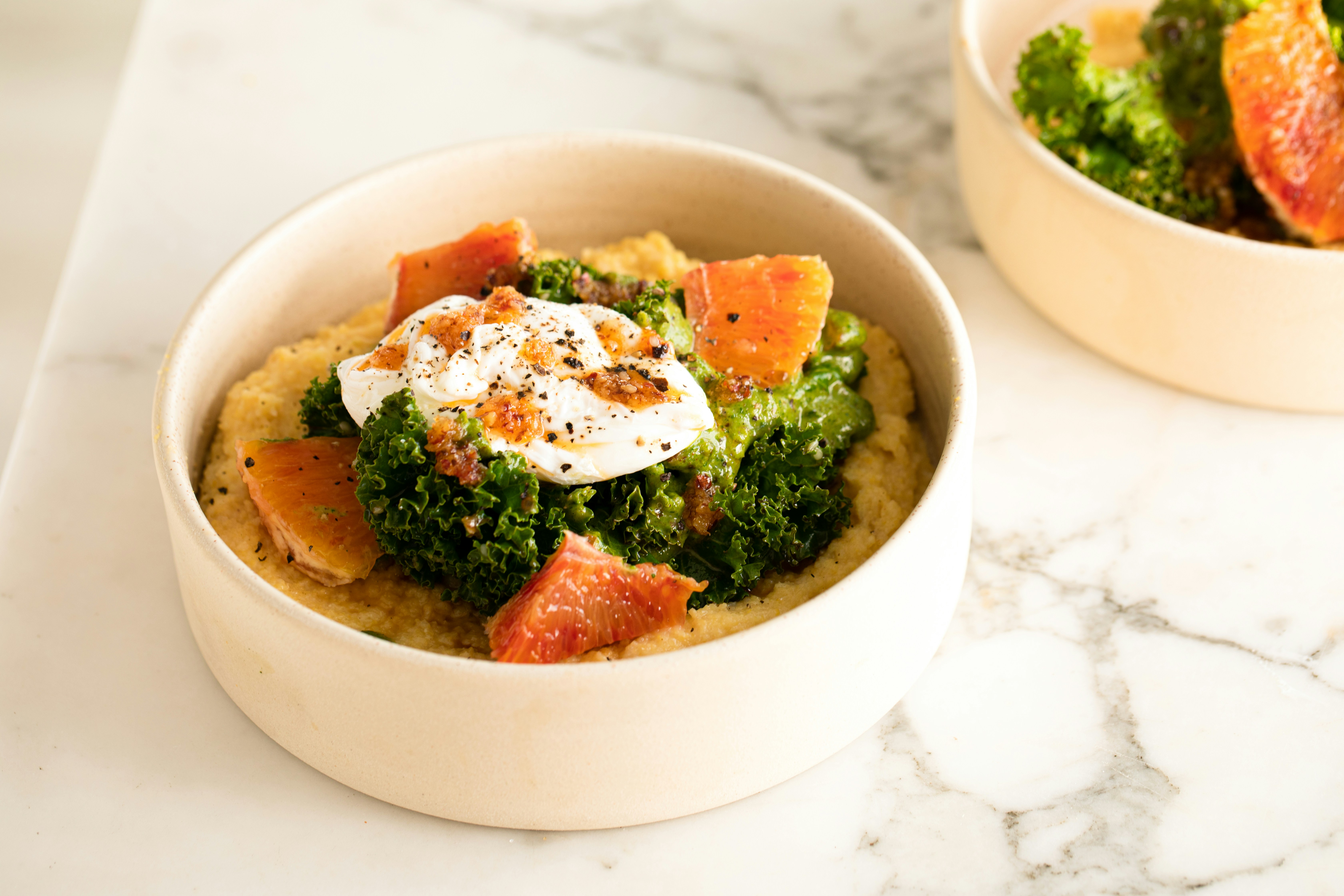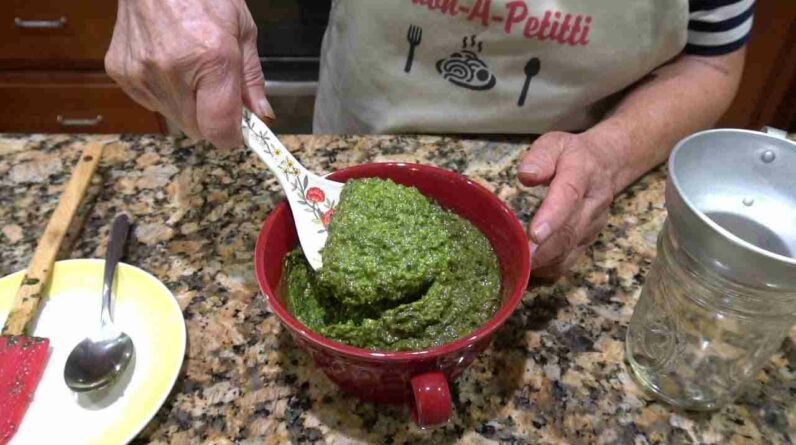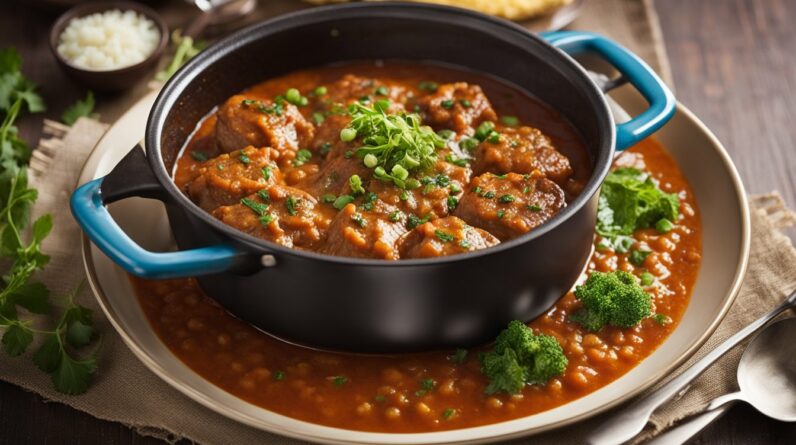Polenta, a traditional Italian dish made from cornmeal, holds a special place in many hearts and kitchens across the country. Its humble origins in northern Italy have evolved over the years, resulting in countless variations and culinary creations. In this article, we will explore the art of crafting a flawless polenta, from selecting the right cornmeal to mastering the perfect cooking technique. Join us as we uncover the secrets behind this beloved Italian staple and discover the various ways it can be served to tantalize your taste buds.
What is Italian Polenta
Definition
Italian Polenta is a traditional Italian dish made from cornmeal, water or broth, and various seasonings. It has a creamy, porridge-like texture and can be served as a side dish or a main course. Polenta is a versatile dish that originated in Northern Italy and has gained popularity worldwide.
Origin
The origins of Italian polenta can be traced back to ancient times, when Roman tribes subsisted on a simple diet of grains. Polenta was a staple food for the working class in Italy, especially in regions where corn was plentiful. Over time, it became a beloved comfort food enjoyed by people of all classes.
Ingredients for Italian Polenta
Cornmeal
The main ingredient in Italian polenta is cornmeal. Traditionally, yellow cornmeal is used, but white cornmeal can also be used depending on personal preference. The cornmeal gives the polenta its distinctive flavor and texture.
Water or Broth
To cook the cornmeal, water or broth is used. Water is the most basic option, but using broth can add depth and flavor to the polenta. Vegetable or chicken broth are common choices. The liquid is boiled before adding the cornmeal.
Salt
Salt is a crucial ingredient to season the polenta. It enhances the flavors of the cornmeal and balances the overall taste of the dish. It is added to the boiling liquid before the cornmeal is incorporated.
Butter or Olive Oil
To make the polenta richer and creamier, butter or olive oil can be added. These fats contribute to the smooth texture and add a subtle richness to the dish. Butter is the traditional choice, but olive oil can be used as a healthier alternative.
Additional Flavorings (optional)
Additional flavorings can be incorporated into the polenta to enhance its taste. Common additions include grated cheese (such as Parmesan or Pecorino), herbs (such as rosemary or thyme), garlic, or even sautéed onions. These flavorings can be added during the cooking process or sprinkled on top when serving.
Traditional Italian Polenta Recipe
Preparing the Polenta
To prepare the polenta, start by boiling water or broth in a large pot. Add salt to the liquid and bring it to a boil. Gradually whisk in the cornmeal, ensuring that there are no lumps. It is important to whisk continuously to prevent clumping and achieve a smooth consistency.
Cooking the Polenta
Once the cornmeal is fully incorporated, reduce the heat to low and cover the pot. Allow the polenta to simmer, stirring occasionally to prevent sticking and lumps. The cooking time varies depending on the type of cornmeal used, but it typically takes around 30 minutes to an hour. The longer the polenta cooks, the creamier it becomes.
Serving the Polenta
When the polenta reaches the desired consistency, it is ready to be served. Traditional Italian polenta is served hot and creamy, often poured onto a large wooden cutting board or a shallow serving dish. It can be shaped into a mound or spread out to create a rustic presentation. Polenta pairs well with a variety of toppings and accompaniments.
Variations of Italian Polenta
Creamy Polenta
Creamy polenta is the most common variation of Italian polenta. It is cooked to a smooth and silky consistency, with a texture similar to mashed potatoes. Creamy polenta is versatile and can be served as a base for various toppings or mixed with ingredients like cheese or herbs for added flavor.
Grilled or Baked Polenta
Grilling or baking polenta adds a delightful crispy crust to the dish. Once the polenta has cooled and firmed up, it can be cut into slices or cubes and grilled or baked until golden and slightly crispy. Grilled or baked polenta can be served as a side dish or as a base for toppings such as grilled vegetables or meat.
Fried Polenta
Fried polenta takes the creamy polenta and transforms it into a crispy and indulgent delight. After the polenta has cooled and firmed up, it is cut into desired shapes, typically squares or rectangles. The polenta is then pan-fried until golden brown and crispy on the outside. Fried polenta can be served as a snack or as a side dish.
Polenta Cake
Polenta can also be used to create sweet dishes, like polenta cake. By incorporating sugar, butter, and additional flavorings such as lemon zest or vanilla extract into the polenta mixture, a moist and flavorful cake can be baked. Polenta cake has a unique texture and pairs well with fresh fruit or a dusting of powdered sugar.
Choosing the Right Polenta
Types of Cornmeal
The type of cornmeal used in making polenta can greatly affect the final result. There are different varieties of cornmeal available, ranging from fine to coarse. Fine cornmeal produces a smoother and creamier polenta, while coarse cornmeal results in a more rustic and textured dish. The choice of cornmeal is a matter of personal preference and the desired outcome of the polenta dish.
Coarseness of Cornmeal
The coarseness of the cornmeal can also impact the cooking time and texture of the polenta. Finely ground cornmeal cooks faster and requires less liquid to achieve the desired consistency. Coarsely ground cornmeal takes longer to cook and requires more liquid to soften properly. It is important to follow specific cooking instructions based on the coarseness of the cornmeal being used.
Serving Italian Polenta as a Side Dish
Polenta with Mushroom Ragout
One popular way to serve polenta as a side dish is by pairing it with a flavorful mushroom ragout. The earthy and savory flavors of the mushrooms complement the creamy polenta beautifully. The ragout can be made with a variety of mushrooms, onions, garlic, and herbs, cooked in a rich tomato or wine-based sauce.
Creamy Polenta with Parmesan
Another classic side dish option is serving creamy polenta with a generous amount of grated Parmesan cheese. The sharp and nutty flavor of the cheese adds a wonderful depth to the polenta. A sprinkle of freshly ground black pepper or a drizzle of olive oil can further enhance the taste.
Polenta with Tomato Sauce
Polenta can be served with a flavorful tomato sauce as a delicious side dish. The bright, tangy flavors of the tomato sauce balance the richness of the polenta. The sauce can be simple, made with tomatoes, onions, garlic, and herbs, or more elaborate, with added vegetables or meat.
Grilled Polenta with Vegetables
Grilled polenta topped with a medley of grilled vegetables is a healthy and satisfying side dish option. The smoky charred flavors of the grilled polenta and vegetables create a delightful combination. Seasoned with herbs and drizzled with balsamic glaze or olive oil, this dish is a crowd-pleaser.
Serving Italian Polenta as a Main Dish
Polenta with Sausage and Peppers
Polenta can be transformed into a satisfying main course by pairing it with sautéed sausage and peppers. The sweet and slightly spicy flavors of the peppers complement the creamy polenta and savory sausage. This hearty dish is a favorite among meat lovers.
Polenta with Braised Meat
Braised meat, such as short ribs or beef stew, can be served with polenta to create a comforting and filling main course. The rich and tender meat pairs wonderfully with the creamy polenta, creating a combination that is sure to impress. The polenta acts as a perfect canvas for soaking up the flavorful sauce.
Polenta Casserole
Polenta can be used as a base for a delicious casserole. Layered with ingredients such as cheese, vegetables, and meat, polenta casserole is a versatile dish that can be customized to personal taste. The layers of polenta and fillings are baked together, resulting in a hearty and satisfying meal.
Polenta Lasagna
A unique twist on the classic Italian dish, polenta lasagna replaces the traditional pasta with layers of polenta. The polenta is cooked until firm, sliced into sheets, and used as the base for the lasagna. It is layered with meat or vegetables, tomato sauce, and cheese. Baking the polenta lasagna creates a gooey, cheesy, and flavorful dish.
Pairing Italian Polenta with Wine
Full-bodied Red Wines
When serving polenta as a main course with meat or flavorful sauces, full-bodied red wines are a great choice. Wines such as Barolo, Amarone, or Chianti Classico complement the richness of the dishes and provide a counterbalance to the creamy polenta. These wines have robust flavors and can hold their own against the bold flavors of the polenta.
Light-bodied Red Wines
If serving polenta as a side dish or with lighter toppings, light-bodied red wines can be a suitable option. Wines like Valpolicella or Dolcetto pair well with the gentle flavors of the polenta and allow the toppings to shine. These wines have a lighter profile and are perfect for a more delicate pairing.
White Wines
Though typically associated with fish or white meat, white wines can also be a great match for polenta dishes. Crisp and refreshing white wines like Pinot Grigio or Sauvignon Blanc can cut through the richness of the polenta and provide a contrast in flavors. The acidity in these wines helps cleanse the palate and prepare it for the next bite.

Tips for Perfect Italian Polenta
Choosing the Right Cornmeal-to-Water Ratio
To achieve the desired consistency, it is essential to find the right cornmeal-to-water ratio. As a general guideline, use a ratio of 4 cups of liquid to 1 cup of cornmeal if using fine cornmeal, or 5 cups of liquid to 1 cup of cornmeal if using coarse cornmeal. Adjust the ratios based on personal preference and the specific instructions of the cornmeal package.
Stirring Consistently
Consistent stirring is crucial during the cooking process to prevent lumps and ensure even heat distribution. Use a whisk or a wooden spoon to continuously stir the polenta, especially during the initial stages of incorporating the cornmeal. This will help create a smooth and creamy texture.
Letting the Polenta Rest
After the polenta has finished cooking, it is beneficial to let it rest for a few minutes before serving. This allows the polenta to thicken and set further. During the resting period, the polenta will become firmer and easier to shape or slice.
Adding Ingredients Gradually
When incorporating additional flavorings into the polenta, such as cheese or herbs, it is best to add them gradually. This ensures that the flavors are evenly distributed throughout the polenta. Add the ingredients in small amounts, stirring well after each addition, until the desired taste is achieved.
Serving and Storing Leftover Polenta
Polenta is best served immediately while it is still warm and creamy. It can be poured onto a platter or individual plates and topped with desired ingredients. Leftover polenta can be stored in an airtight container in the refrigerator for up to three days. When reheating, add a small amount of liquid, such as water or broth, to maintain its creamy consistency.
Summing Up
Italian polenta is a delicious and versatile dish that has been enjoyed for centuries. With its creamy texture and ability to be paired with a wide range of toppings and accompaniments, polenta offers endless possibilities. Whether served as a side dish or a main course, the art of making a perfect Italian polenta lies in choosing the right ingredients, following the appropriate cooking techniques, and experimenting with various flavors. So, embrace the warmth and comfort of polenta and discover the countless ways to enjoy this classic Italian dish.










